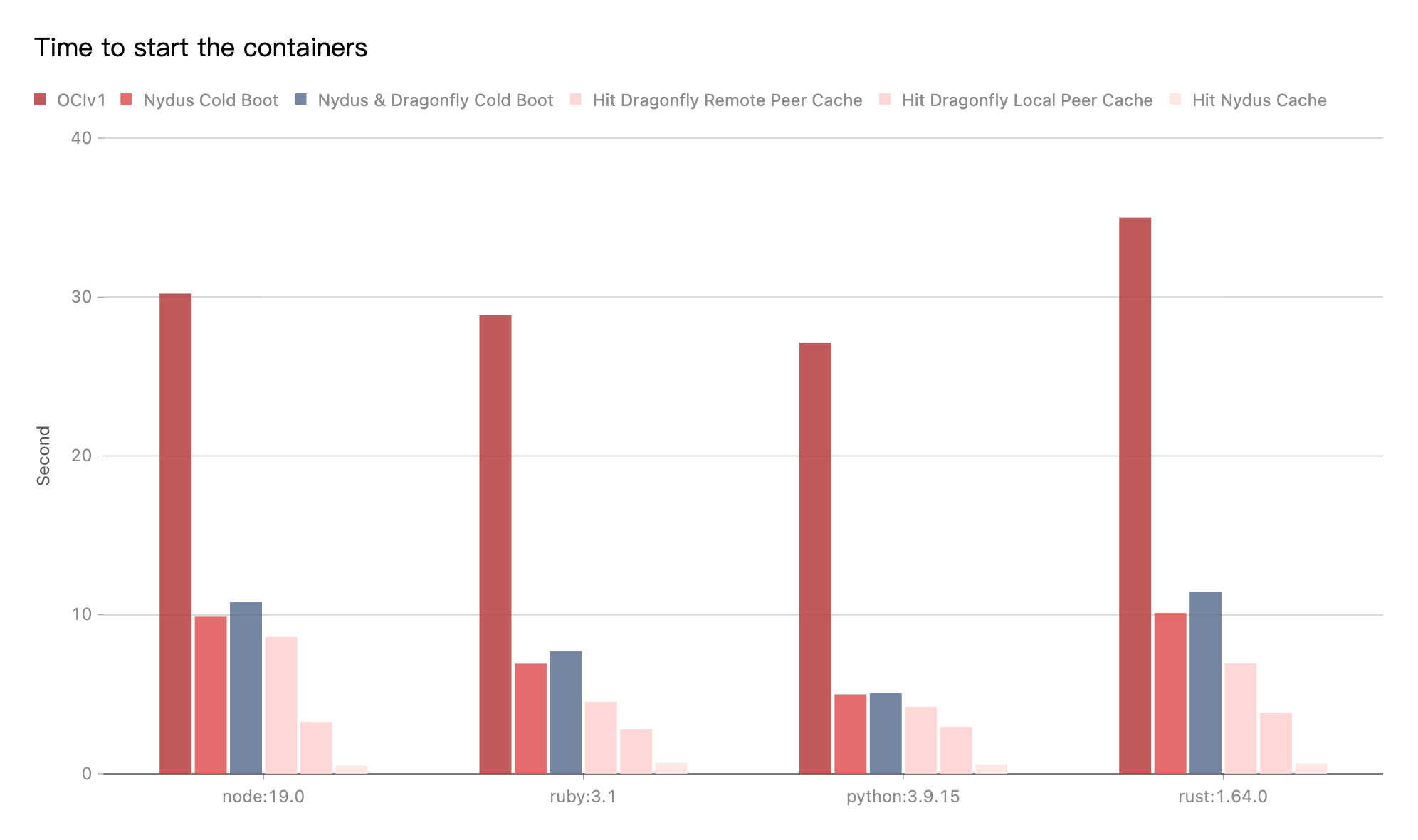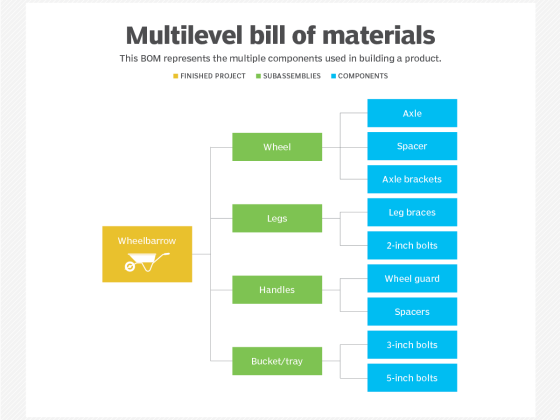Introduce definition
Dragonfly has been selected and put into production use by many Internet companies since its open source in 2017, and entered CNCF in October 2018, becoming the third project in China to enter the CNCF Sandbox. In April 2020, CNCF TOC voted to accept Dragonfly as an CNCF Incubating project. Dragonfly has developed the next version through production practice, which has absorbed the advantages of Dragonfly1.x and made a lot of optimizations for known problems.
Nydus optimized the OCIv1 image format, and designed a brand new image-based filesystem, so that the container can download the image on demand, and the container no longer needs to download the complete image to start the container. In the latest version, dragonfly has completed the integration with the nydus, allowing the container to start downloading images on demand, reducing the amount of downloads. The dragonfly P2P transmission method can also be used during the transmission process to reduce the back-to-source traffic and increase the speed.
From our partners:
Quick start
Prerequisites
| Name | Version | Document |
|---|---|---|
| Kubernetes cluster | 1.20+ | kubernetes.io |
| Helm | 3.8.0+ | helm.sh |
| Containerd | v1.4.3+ | containerd.io |
| Nerdctl | 0.22+ | containerd/nerdctl |
Notice: Kind is recommended if no kubernetes cluster is available for testing.
Install dragonfly
For detailed installation documentation based on kubernetes cluster, please refer to quick-start-kubernetes.
Setup kubernetes cluster
Create kind multi-node cluster configuration file kind-config.yaml, configuration content is as follows:
kind: Cluster
apiVersion: kind.x-k8s.io/v1alpha4
nodes:
- role: control-plane
- role: worker
extraPortMappings:
- containerPort: 30950
hostPort: 65001
- containerPort: 30951
hostPort: 40901
- role: workerCreate a kind multi-node cluster using the configuration file:
kind create cluster --config kind-config.yamlSwitch the context of kubectl to kind cluster:
kubectl config use-context kind-kindKind loads dragonfly image
Pull dragonfly latest images:
docker pull dragonflyoss/scheduler:latest
docker pull dragonflyoss/manager:latest
docker pull dragonflyoss/dfdaemon:latestKind cluster loads dragonfly latest images:
kind load docker-image dragonflyoss/scheduler:latest
kind load docker-image dragonflyoss/manager:latest
kind load docker-image dragonflyoss/dfdaemon:latestCreate dragonfly cluster based on helm charts
Create helm charts configuration file charts-config.yaml and enable prefetching, configuration content is as follows:
scheduler:
replicas: 1
metrics:
enable: true
config:
verbose: true
pprofPort: 18066
seedPeer:
replicas: 1
metrics:
enable: true
config:
verbose: true
pprofPort: 18066
download:
prefetch: true
dfdaemon:
hostNetwork: true
config:
verbose: true
pprofPort: 18066
metrics: :8000
download:
prefetch: true
proxy:
defaultFilter: 'Expires&Signature&ns'
security:
insecure: true
tcpListen:
listen: 0.0.0.0
port: 65001
registryMirror:
dynamic: true
url: https://index.docker.io
proxies:
- regx: blobs/sha256.*
manager:
replicas: 1
metrics:
enable: true
config:
verbose: true
pprofPort: 18066Create a dragonfly cluster using the configuration file:
$ helm repo add dragonfly https://dragonflyoss.github.io/helm-charts/
$ helm install --wait --create-namespace --namespace dragonfly-system dragonfly dragonfly/dragonfly -f charts-config.yaml
NAME: dragonfly
LAST DEPLOYED: Wed Oct 19 04:23:22 2022
NAMESPACE: dragonfly-system
STATUS: deployed
REVISION: 1
TEST SUITE: None
NOTES:
1. Get the scheduler address by running these commands:
export <em>SCHEDULER_POD_NAME</em>=<em>$(</em><em>kubectl get pods --namespace dragonfly-system -l </em><em>"app=dragonfly,release=dragonfly,component=scheduler"</em><em> -o </em><em>jsonpath</em><em>=</em><em>{</em><em>.items</em><em>[</em><em>0</em><em>]</em><em>.metadata.name</em><em>}</em><em>)</em>
export <em>SCHEDULER_CONTAINER_PORT</em>=<em>$(</em><em>kubectl get pod --namespace dragonfly-system $SCHEDULER_POD_NAME -o </em><em>jsonpath</em><em>=</em><em>"{.spec.containers[0].ports[0].containerPort}"</em><em>)</em>
kubectl --namespace dragonfly-system port-forward <em>$SCHEDULER_POD_NAME</em> 8002:<em>$SCHEDULER_CONTAINER_PORT</em>
echo "Visit http://127.0.0.1:8002 to use your scheduler"
2. Get the dfdaemon port by running these commands:
export <em>DFDAEMON_POD_NAME</em>=<em>$(</em><em>kubectl get pods --namespace dragonfly-system -l </em><em>"app=dragonfly,release=dragonfly,component=dfdaemon"</em><em> -o </em><em>jsonpath</em><em>=</em><em>{</em><em>.items</em><em>[</em><em>0</em><em>]</em><em>.metadata.name</em><em>}</em><em>)</em>
export <em>DFDAEMON_CONTAINER_PORT</em>=<em>$(</em><em>kubectl get pod --namespace dragonfly-system $DFDAEMON_POD_NAME -o </em><em>jsonpath</em><em>=</em><em>"{.spec.containers[0].ports[0].containerPort}"</em><em>)</em>
You can use <em>$DFDAEMON_CONTAINER_PORT</em> as a proxy port <em>in</em> Node.
3. Configure runtime to use dragonfly:
https://d7y.io/docs/getting-started/quick-start/kubernetes/Check that dragonfly is deployed successfully:
$ kubectl get po -n dragonfly-system
NAME READY STATUS RESTARTS AGE
dragonfly-dfdaemon-rhnr6 1/1 Running 4 (101s ago) 3m27s
dragonfly-dfdaemon-s6sv5 1/1 Running 5 (111s ago) 3m27s
dragonfly-manager-67f97d7986-8dgn8 1/1 Running 0 3m27s
dragonfly-mysql-0 1/1 Running 0 3m27s
dragonfly-redis-master-0 1/1 Running 0 3m27s
dragonfly-redis-replicas-0 1/1 Running 1 (115s ago) 3m27s
dragonfly-redis-replicas-1 1/1 Running 0 95s
dragonfly-redis-replicas-2 1/1 Running 0 70s
dragonfly-scheduler-0 1/1 Running 0 3m27s
dragonfly-seed-peer-0 1/1 Running 2 (95s ago) 3m27sCreate peer service configuration file peer-service-config.yaml, configuration content is as follows:
apiVersion: v1
kind: Service
metadata:
name: peer
namespace: dragonfly-system
spec:
type: NodePort
ports:
- name: http-65001
nodePort: 30950
port: 65001
- name: http-40901
nodePort: 30951
port: 40901
selector:
app: dragonfly
component: dfdaemon
release: dragonflyCreate a peer service using the configuration file:
kubectl apply -f peer-service-config.yamlInstall nydus for containerd
For detailed nydus installation documentation based on containerd environment, please refer to nydus-setup-for-containerd-environment. The example uses Systemd to manage the nydus-snapshotter service.
Install nydus tools
Download containerd-nydus-grpc binary, please refer to nydus-snapshotter/releases:
<em>NYDUS_SNAPSHOTTER_VERSION</em>=0.3.3
wget https://github.com/containerd/nydus-snapshotter/releases/download/v<em>$NYDUS_SNAPSHOTTER_VERSION</em>/nydus-snapshotter-v<em>$NYDUS_SNAPSHOTTER_VERSION</em>-x86_64.tgz
tar zxvf nydus-snapshotter-v<em>$NYDUS_SNAPSHOTTER_VERSION</em>-x86_64.tgzInstall containerd-nydus-grpc tool:
sudo cp nydus-snapshotter/containerd-nydus-grpc /usr/local/bin/Download nydus-image, nydusd and nydusify binaries, please refer to dragonflyoss/image-service:
<em>NYDUS_VERSION</em>=2.1.1
wget https://github.com/dragonflyoss/image-service/releases/download/v<em>$NYDUS_VERSION</em>/nydus-static-v<em>$NYDUS_VERSION</em>-linux-amd64.tgz
tar zxvf nydus-static-v<em>$NYDUS_VERSION</em>-linux-amd64.tgzInstall nydus-image, nydusd and nydusify tools:
sudo cp nydus-static/nydus-image nydus-static/nydusd nydus-static/nydusify /usr/local/bin/Install nydus snapshotter plugin for containerd
Configure containerd to use the nydus-snapshotter plugin, please refer to configure-and-start-containerd.
127.0.0.1:65001 is the proxy address of dragonfly peer, and the X-Dragonfly-Registry header is the address of origin registry, which is provided for dragonfly to download the images.
Change configuration of containerd in /etc/containerd/config.toml:
[proxy_plugins]
[proxy_plugins.nydus]
type = "snapshot"
address = "/run/containerd-nydus/containerd-nydus-grpc.sock"
[plugins.cri]
[plugins.cri.containerd]
snapshotter = "nydus"
disable_snapshot_annotations = falseRestart containerd service:
sudo systemctl restart containerdCheck that containerd uses the nydus-snapshotter plugin:
$ ctr -a /run/containerd/containerd.sock plugin ls | grep nydus
io.containerd.snapshotter.v1 nydus - okSystemd starts nydus snapshotter service
For detailed configuration documentation based on nydus mirror mode, please refer to enable-mirrors-for-storage-backend.
Create nydusd configuration file nydusd-config.json, configuration content is as follows:
{
"device": {
"backend": {
"type": "registry",
"config": {
"mirrors": [
{
"host": "http://127.0.0.1:65001",
"auth_through": false,
"headers": {
"X-Dragonfly-Registry": "https://index.docker.io"
},
"ping_url": "http://127.0.0.1:40901/server/ping"
}
],
"scheme": "https",
"skip_verify": false,
"timeout": 10,
"connect_timeout": 10,
"retry_limit": 2
}
},
"cache": {
"type": "blobcache",
"config": {
"work_dir": "/var/lib/nydus/cache/"
}
}
},
"mode": "direct",
"digest_validate": false,
"iostats_files": false,
"enable_xattr": true,
"fs_prefetch": {
"enable": true,
"threads_count": 10,
"merging_size": 131072,
"bandwidth_rate": 1048576
}
}Copy configuration file to /etc/nydus/config.json:
sudo mkdir /etc/nydus && cp nydusd-config.json /etc/nydus/config.jsonCreate systemd configuration file nydus-snapshotter.service of nydus snapshotter, configuration content is as follows:
[Unit]
Description=nydus snapshotter
After=network.target
Before=containerd.service
[Service]
Type=simple
Environment=HOME=/root
ExecStart=/usr/local/bin/containerd-nydus-grpc --config-path /etc/nydus/config.json
Restart=always
RestartSec=1
KillMode=process
OOMScoreAdjust=-999
StandardOutput=journal
StandardError=journal
[Install]
WantedBy=multi-user.targetCopy configuration file to /etc/systemd/system/:
sudo cp nydus-snapshotter.service /etc/systemd/system/Systemd starts nydus snapshotter service:
$ sudo systemctl enable nydus-snapshotter
$ sudo systemctl start nydus-snapshotter
$ sudo systemctl status nydus-snapshotter
● nydus-snapshotter.service - nydus snapshotter
Loaded: loaded (/etc/systemd/system/nydus-snapshotter.service; enabled; vendor preset: enabled)
Active: active (running) since Wed 2022-10-19 08:01:00 UTC; 2s ago
Main PID: 2853636 (containerd-nydu)
Tasks: 9 (limit: 37574)
Memory: 4.6M
CPU: 20ms
CGroup: /system.slice/nydus-snapshotter.service
└─2853636 /usr/local/bin/containerd-nydus-grpc --config-path /etc/nydus/config.json
Oct 19 08:01:00 kvm-gaius-0 systemd[1]: Started nydus snapshotter.
Oct 19 08:01:00 kvm-gaius-0 containerd-nydus-grpc[2853636]: <em>time</em>="2022-10-19T08:01:00.493700269Z" <em>level</em>=info <em>msg</em>="gc goroutine start..."
Oct 19 08:01:00 kvm-gaius-0 containerd-nydus-grpc[2853636]: <em>time</em>="2022-10-19T08:01:00.493947264Z" <em>level</em>=info <em>msg</em>="found 0 daemons running"Convert an image to nydus format
Convert python:3.9.15 image to nydus format, you can use the converted dragonflyoss/python:3.9.15-nydus image and skip this step. Conversion tool can use nydusify and acceld.
Login to Dockerhub:
docker loginConvert python:3.9.15 image to nydus format, and DOCKERHUB_REPO_NAME environment variable needs to be set to the user’s image repository:
<em>DOCKERHUB_REPO_NAME</em>=dragonflyoss
sudo nydusify convert --nydus-image /usr/local/bin/nydus-image --source python:3.9.15 --target <em>$DOCKERHUB_REPO_NAME</em>/python:3.9.15-nydusTry nydus with nerdctl
Running python:3.9.15-nydus with nerdctl:
sudo nerdctl --snapshotter nydus run --rm -it <em>$DOCKERHUB_REPO_NAME</em>/python:3.9.15-nydusCheck that nydus is downloaded via dragonfly based on mirror mode:
$ grep mirrors /var/lib/containerd-nydus/logs/**/*log
[2022-10-19 10:16:13.276548 +00:00] INFO [storage/src/backend/connection.rs:271] backend config: ConnectionConfig { proxy: ProxyConfig { url: "", ping_url: "", fallback: false, check_interval: 5, use_http: false }, mirrors: [MirrorConfig { host: "http://127.0.0.1:65001", headers: {"X-Dragonfly-Registry": "https://index.docker.io"}, auth_through: false }], skip_verify: false, timeout: 10, connect_timeout: 10, retry_limit: 2 }Performance testing
Test the performance of single-machine image download after the integration of nydus mirror mode and dragonfly P2P. Test running version commands using images in different languages. For example, the startup command used to run a python image is python -V. The tests were performed on the same machine. Due to the influence of the network environment of the machine itself, the actual download time is not important, but the ratio of the increase in the download time in different scenarios is very important.

- OCIv1: Use containerd to pull image directly.
- Nydus Cold Boot: Use containerd to pull image via nydus-snapshotter and doesn’t hit any cache.
- Nydus & Dragonfly Cold Boot: Use containerd to pull image via nydus-snapshotter. Transfer the traffic to dragonfly P2P based on nydus mirror mode and no cache hits.
- Hit Dragonfly Remote Peer Cache: Use containerd to pull image via nydus-snapshotter. Transfer the traffic to dragonfly P2P based on nydus mirror mode and hit the remote peer cache.
- Hit Dragonfly Local Peer Cache: Use containerd to pull image via nydus-snapshotter. Transfer the traffic to dragonfly P2P based on nydus mirror mode and hit the local peer cache.
- Hit Nydus Cache: Use containerd to pull image via nydus-snapshotter. Transfer the traffic to dragonfly P2P based on nydus mirror mode and hit the nydus local cache.
Test results show nydus mirror mode and dragonfly P2P integration. Use the nydus download image to compare the OCIv1 mode, It can effectively reduce the image download time. The cold boot of nydus and nydus & dragonfly are basically close. All hits to dragonfly cache are better than nydus only. The most important thing is that if a very large kubernetes cluster uses nydus to pull images. The download of each image layer will be generate as many range requests as needed. The QPS of the source of the registry is too high. Causes the QPS of the registry to be relatively high. Dragonfly can effectively reduce the number of requests and download traffic for back-to-source registry. In the best case, dragonfly can make the same task back-to-source download only once.
Links
Dragonfly community
- Website: https://d7y.io/
- Github Repo: https://github.com/dragonflyoss/Dragonfly2
- Slack Channel: #dragonfly on CNCF Slack
- Discussion Group: [email protected]
- Twitter: @dragonfly_oss
Nydus community
- Website: https://nydus.dev/
- Github Repo: https://github.com/dragonflyoss/image-service
- Slack Channel: #nydus
Guest post originally published on the Dragonfly blog by Gaius
Source CNCF
For enquiries, product placements, sponsorships, and collaborations, connect with us at [email protected]. We'd love to hear from you!
Our humans need coffee too! Your support is highly appreciated, thank you!








